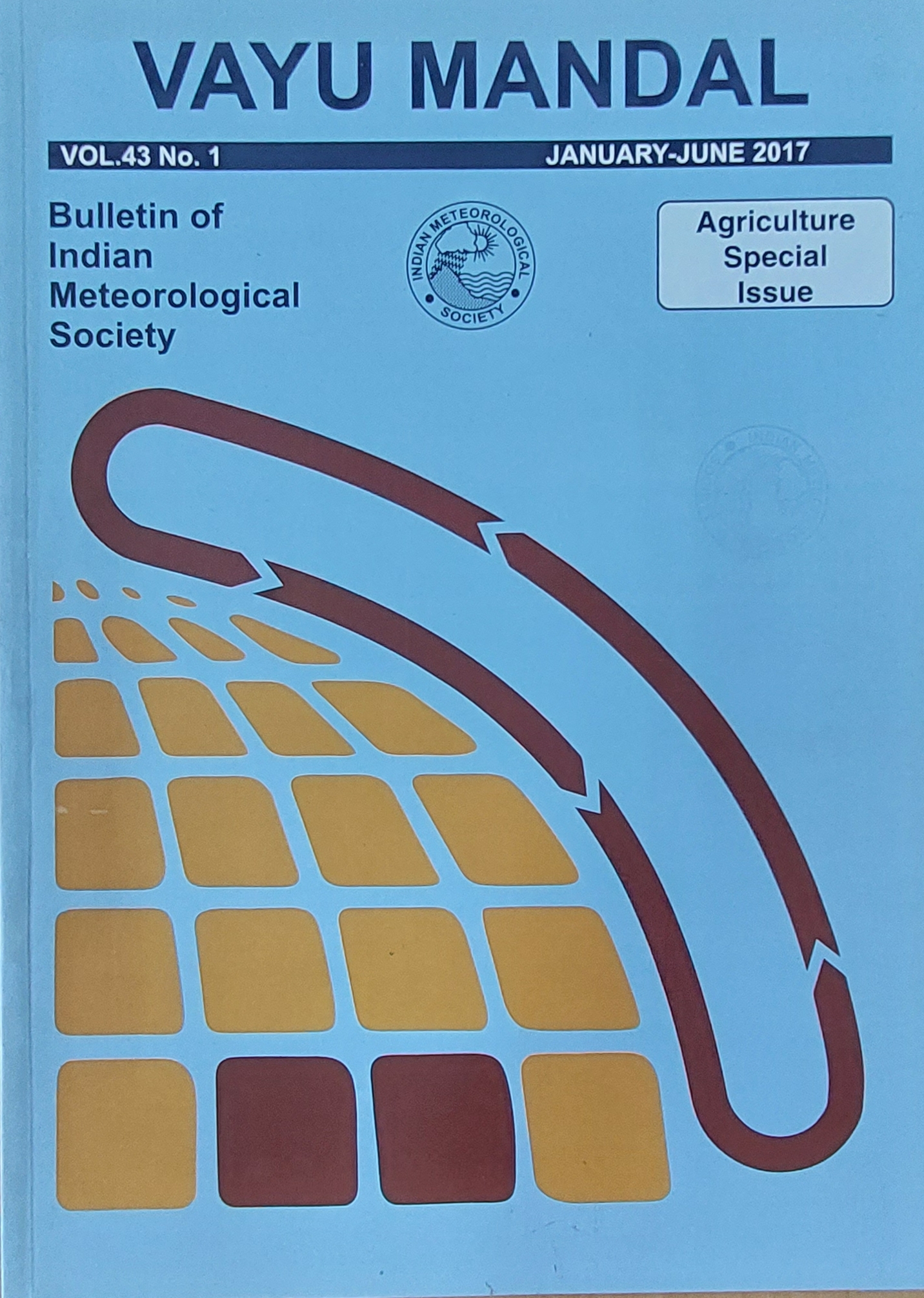Impact of Heat Stress on Animal Health Using Temperature Humidity Index over India
Keywords:
Temperature Humidity Index, thermal Stress, fodder
Abstract
The thermal stress on animals has been observed all over the India. Temperature-Humidity Index (THI) is an indicator used to measure degree of heat stress on the animals. For the present study monthly mean THI was calculated from 1980 to 2015. The thermal stress is categorized as No Stress (below 70), Mild Stress (71-75), Semi Moderate Stress (76-80), Moderate Stress (81-85) and Severe Stress (85-90). During monsoon season, the thermal stress is the combination of semi moderate and severe stress conditions, whereas in the winter season it is the combination of mild and semi moderate stress conditions. During pre-monsoon season the thermal stress is the combination of semi moderate and severe stress conditions and in the post-monsoon season it is the combination of no stress condition and mild stress conditions observed over India. Over Jammu and Kashmir only the mild stress condition has been observed from June to August months while rest of the year it shows no stress condition. The thermal stress conditions in the form of mild, semi moderate or severe stress is always located over Tamil Nadu state throughout the year. Therefore, mitigation practices can be followed according to the season for recovering the animal from the thermal stress during mild, semi moderate and severe stress condition across the country which will be of more helpful. Heat stress negatively affects cow comfort, dry fodder intake and ultimately the dairy production in India. The appropriate management practices must be applied in counter environmental conditions that can lead to reduce the productivity of animals. Finally, heat stress control practices should also be adopted according to the environmental, topographical and intensity of stress condition and applied carefully as one method proves successful in one place, it does not guarantee that it will be successful elsewhere in India. Therefore, in this study the monthly mean THI maps and seasonal maps were prepared accordingly and with the help of these maps required heat stress mitigation practices must be followed
Published
2024-02-23
How to Cite
Kulkarni, N., Dhangar, N., Khedikar, S., Singh, P., & Balasubramanian, R. (2024). Impact of Heat Stress on Animal Health Using Temperature Humidity Index over India. Vayumandal, 43(1), 49-55. Retrieved from https://vayumandal.imetsociety.org/index.php/Vayumandal/article/view/116
Section
Research Paper
Copyright (c) 2024 Vayumandal

This work is licensed under a Creative Commons Attribution-NonCommercial 4.0 International License.
All articles published by VAYUMANDAL are licensed under the Creative Commons Attribution 4.0 International License. This permits anyone.
Anyone is free:
- To Share - to copy, distribute and transmit the work
- To Remix - to adapt the work.
Under the following conditions:
- Share - copy and redistribute the material in any medium or format
- Adapt - remix, transform, and build upon the material for any purpose, even
commercially.


